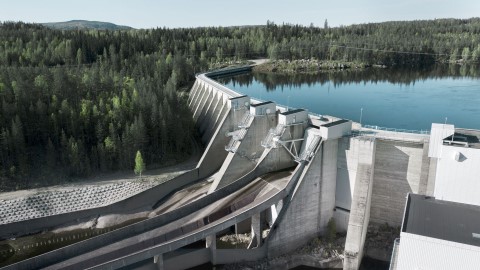Hydroelectricity, a renewable energy source that harnesses the power of flowing water to generate electricity, has been a cornerstone of global energy production for over a century. With the growing need for sustainable and environmentally friendly energy solutions, hydroelectric power is more important than ever in the 21st century. As a result, researchers and engineers are continually developing new breakthroughs and innovations to maximize the potential of this vital resource.
One of the most significant recent advancements in hydroelectric technology is the development of small-scale hydroelectric power plants. These systems, also known as micro-hydro or pico-hydro plants, can generate electricity from small streams and rivers with minimal environmental impact. This innovation has opened up new possibilities for rural and remote communities that lack access to traditional power grids. By harnessing the power of local water sources, these communities can now generate clean, reliable electricity to power their homes and businesses.
In addition to small-scale hydroelectric plants, advancements in turbine technology have also contributed to the increased efficiency and effectiveness of hydroelectric power generation. For example, the development of fish-friendly turbines has addressed one of the primary environmental concerns associated with hydroelectric dams – the impact on aquatic life. These new turbines are designed to allow fish to pass through the system unharmed, reducing the negative effects on local ecosystems.
Another exciting innovation in hydroelectric power generation is the use of tidal and wave energy. While these technologies are still in the early stages of development, they have the potential to revolutionize the way we generate electricity from water. Tidal power plants harness the energy of the ocean’s tides to generate electricity, while wave energy converters capture the power of ocean waves. Both of these technologies have the potential to provide a significant amount of clean, renewable energy to coastal communities around the world.
One of the most promising breakthroughs in hydroelectric power generation is the development of pumped-storage hydroelectricity. This technology allows for the storage of excess energy generated during periods of low demand, which can then be released back into the grid during periods of high demand. Pumped-storage hydroelectric plants work by pumping water uphill into a reservoir when electricity demand is low, and then releasing the water back through turbines to generate electricity when demand is high. This process effectively turns the hydroelectric plant into a giant battery, helping to balance the electricity grid and reduce the need for fossil fuel-based power plants.
As the world continues to grapple with the challenges of climate change and the need for sustainable energy solutions, the importance of hydroelectric power cannot be overstated. The latest breakthroughs and innovations in this field are helping to make hydroelectricity more efficient, environmentally friendly, and accessible to communities around the world.
In conclusion, hydroelectricity in the 21st century is marked by a series of breakthroughs and innovations that have the potential to significantly impact the way we generate and consume electricity. From small-scale hydroelectric plants that bring power to remote communities, to fish-friendly turbines that minimize environmental impact, to the harnessing of tidal and wave energy, these advancements are pushing the boundaries of what is possible in hydroelectric power generation. Furthermore, the development of pumped-storage hydroelectricity is helping to create a more balanced and efficient electricity grid, reducing our reliance on fossil fuels and paving the way for a more sustainable energy future. As we continue to face the challenges of climate change and the need for clean, renewable energy sources, hydroelectric power will undoubtedly play a crucial role in shaping our global energy landscape.


